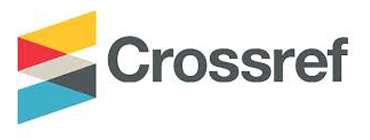IMPROVING STUDENTS’ READING COMPREHENSION BY USING COLLABORATIVE STRATEGIC READING (CSR) AT TENTH GRADE OF STUDENTS SMAS SHALAHUDDIIN AL-MUNAWWARAH
Abstract
This research aimed to find out the improving of the students’ reading comprehension by using collaborative strategic reading. This research was conducted by using Classroom Action Research (CAR). The subject of this research was X-C grade of SMAS ShalahuddiinAl-Munawwarah in 2020/2021 academic year and consisted of 28 students. The objective of this research was to improve students’ reading comprehension by using Collaborative Strategic Reading (CSR) at tenth grade of SMAS Shalahuddiin Al- Munawwarah. This research was conducted in two cycles and each cycle consists of planning, acting, observing, and reflecting. The techniques of analysis data were quantitative and qualitative data. The quantitative data were taken from tests, the tests consist of pre-test and post-test. While the qualitative data were taken from observation, interview, diary notes, and documentation. The result of the data analysis showed that there was an improvement in the students’ reading comprehension after implementing Collaboative Strategic Reading. In the pre-test the students mean was 57 and the students who passed the KKM were 4 students of 28 students or 14%. In the post-test I the students mean was 72 and the students who passed KKM were 13 students of 28 students or 46%. And in the post-test II the students mean was 83 and the students who passed KKM were 23 students of 28 students or 82%. And based on the observation sheet, interview, diary notes and documentation, the students were active and enjoy in participation and responses during the teaching-learning process. In the other words, the students’ reading comprehension was improved by using Collaborative Strategic Reading (CSR).
Full Text:
PDFReferences
Fawaz Alqarni. 2015. Collaborative Strategic Reading to Enhance Learners’ Reading Comprehension in English as Foreign Language. Vol 4 numer 1.Academic Journal ofI nter discoplinary Studies MCSER Publishing, Rome Italy.E-ISSN 2281-4612 ISSN 2281-3993.
Klingner Janette K, et all, (2007), Teaching Reading Comprehension to Students WithLearning Difficulties. New York: The Guidford Press.
Kukuh Budi IKhtiariet all, (2013). The Effect os Using English Authtentic Reading Materials On The Eight Grade Students’ Reading Comprehension Achievement at SMPN 1 tempurejo. Volume 2 Number 2. P. 85-98
Brown, (2004), Language Assessment Principles and Classroom Practices, Person Education.
Nuttal, C, (1982), Teaching Reading Skill in a Foreign Language, London: Heinermann Education Books
Grabe William, and Fredricka L Stoller, (2002), Teaching and Researching Reading. New York: Longman,
RAND Reading Study Group, (2002). Reading for Understanding: Toward R&D Program in Reading Comprehension, Santa Monica, CA:RAND
Snow C Chair, (2002), Reading for Understanding (Toward an R&D Program in ReadingComprehension), Santa Monica: RAND.
Sharon Vaughn, Janette K. Klinger, and Diane P. Bryant, (2001), Collaborative StrategicReading as a Means to Enhance Peer-Medited Instruction for Reading Comprehension and Contents Area Learning. Vol. 22 Number 2,
Suharsimi Arikunto, (2009), Penelitian Tindakan Kelas, Jakarta: Bumi Aksara,Reading for Understanding (Toward an R&D Program in ReadingComprehension), Santa Monica: RAND.
Watson S.M.R, Gable R, et all, (2012). Evidence based Strategies for Improving ReadingComprehension of Secondary Students: Implications for Students with Learning Disabilities, Learning Disabilities Research and practice, 27.
Refbacks
- There are currently no refbacks.

This work is licensed under a Creative Commons Attribution-NonCommercial-ShareAlike 4.0 International License.
INDEXING
Bright Vision by UIN Sumatera Utara Medan is licensed under a Creative Commons Attribution-NonCommercial-ShareAlike 4.0 International License.
Based on a work at http://jurnaltarbiyah.uinsu.ac.id/index.php/brightvision.









